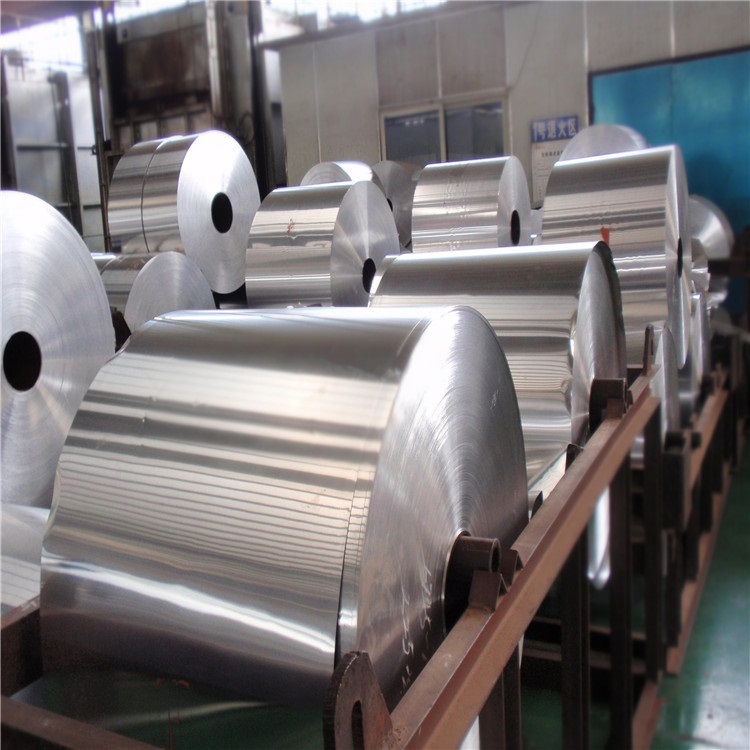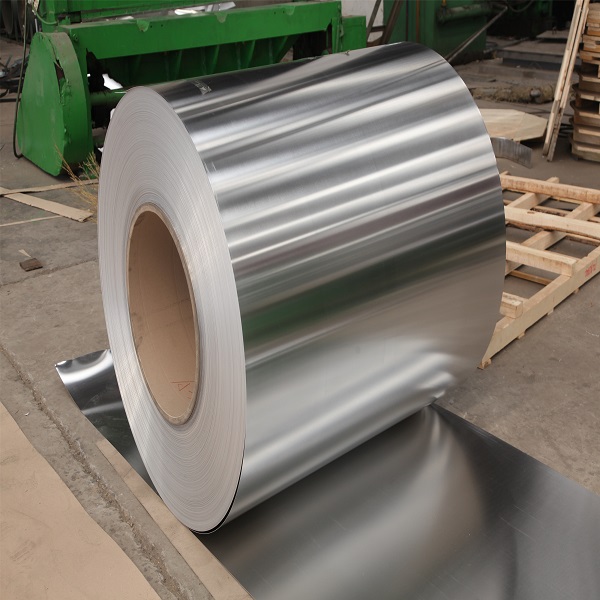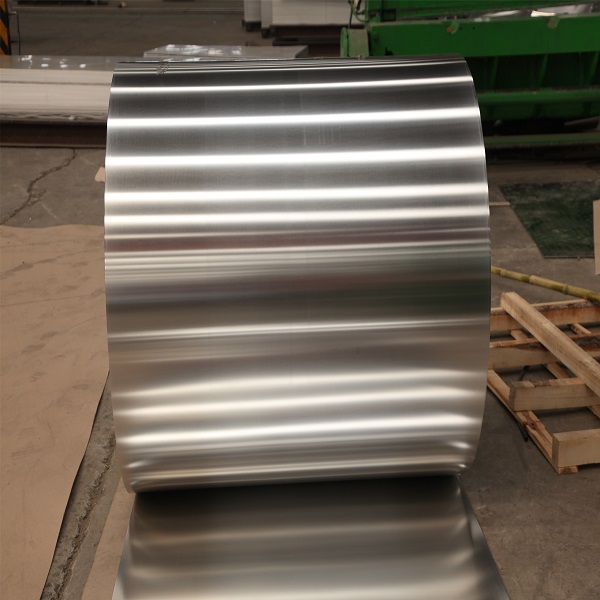1050 1060 3003 5052 Aluminum coil is a metal product that is subjected to flying shearing after rolling and bending processing in a casting and rolling mill. They are widely used in electronics, packaging, construction, machinery, etc.
1060 aluminum sheet is another representative product in 1000 series aluminum alloys.
1060 aluminum alloy is formed by pure aluminum added by a small amount of copper element, which has excellent forming processing characteristics, high corrosion resistance, good weld ability and conductivity.
The same as 1050 aluminum sheet, the aluminum sheet 1060 is widely used in products with low strength requirements, such as chemical instruments, sheet metal processing parts, deep drawing or spinning concave containers, welding parts, heat exchangers, clock surfaces and disk surfaces, nameplates, kitchenware, decorations, reflectors and so on.
Alloy 1060 is a relatively low strength, high purity alloy with a 99.6% minimum aluminum content. It is noted for its excellent welding characteristics and formability along with good corrosion resistance
The 5052 aluminum provides excellent corrosion resistance, even in salt water, and is stronger than 1100 or 3003 aluminum .
5052 aluminum is the highest strength alloy of the more non-heat-treatable grades. Its resistance to fatigue is better than most grades of aluminum.
Alloy 5052 aluminum coil has a good marine atmosphere corrosion resistance of saltwater and excellent workability.
3003 aluminum is the most widely used of all aluminum alloys. It is essentially commercially pure aluminum with the addition of manganese which increases the strength approx. 20% over 1100 grade aluminum alloy.
3003 aluminum may show some slight discoloration when anodized, but it reacts well to mechanical and organic finishings.
Aluminum refers to a rolled thin plate, the thickness is generally between 0.2~4.5mm, and the width can be customized according to needs.
Aluminum coils are usually made of pure aluminum or aluminum alloys and are lightweight, high-strength, and corrosion-resistant.
The manufacturing process of aluminum coils includes raw material pretreatment, smelting, casting, rolling, drawing, cutting and other links. Among them, rolling is the most critical step in the aluminum coil manufacturing process.
The rolling of aluminum coils is usually divided into two methods: hot rolling and cold rolling. Hot rolling is performed at high temperatures and is suitable for manufacturing thicker and larger aluminum coils; cold rolling is performed at room temperature and is suitable for manufacturing thinner and smaller aluminum coils.

Characteristics of aluminum coils
1. Lightweight and high strength: Aluminum alloy has a low density, so the aluminum coil has light weight and high strength.
2. Corrosion resistance: The surface of the aluminum can be treated with oxidation and other treatments to obtain good corrosion resistance.
3. Good machinability: It can be processed by cutting, bending, stamping, welding, etc., and have good machinability.
4. Beautiful and easy to handle: the surface of the aluminum is flat and smooth, easy to carry out surface treatment, such as spraying, coating, etc.
Application of aluminum
1. Construction field: Aluminum sheet coil can be used to manufacture components such as building exterior walls, roofs, ceilings, partitions, etc., and have good decorative and corrosion resistance.
2. Aerospace field: Aluminum sheet coil is an important material for manufacturing aircraft, and is widely used in the manufacture of aircraft, rockets, and satellites.
3. Electronic field: Aluminum coils can be used as manufacturing materials for electronic product casings, radiators and other components, helping to improve the performance and reliability of electronic products.
4. Packaging field: Aluminum Plate coils are suitable for manufacturing cans, food packaging, pharmaceutical packaging and other fields, and have good sealing and anti-corrosion capabilities.
5. Transportation field: Aluminum coils can be used in the manufacturing of cars, trains, ships and other transportation vehicles, helping to reduce the weight of the vehicle body and improve the overall performance of the vehicle.




